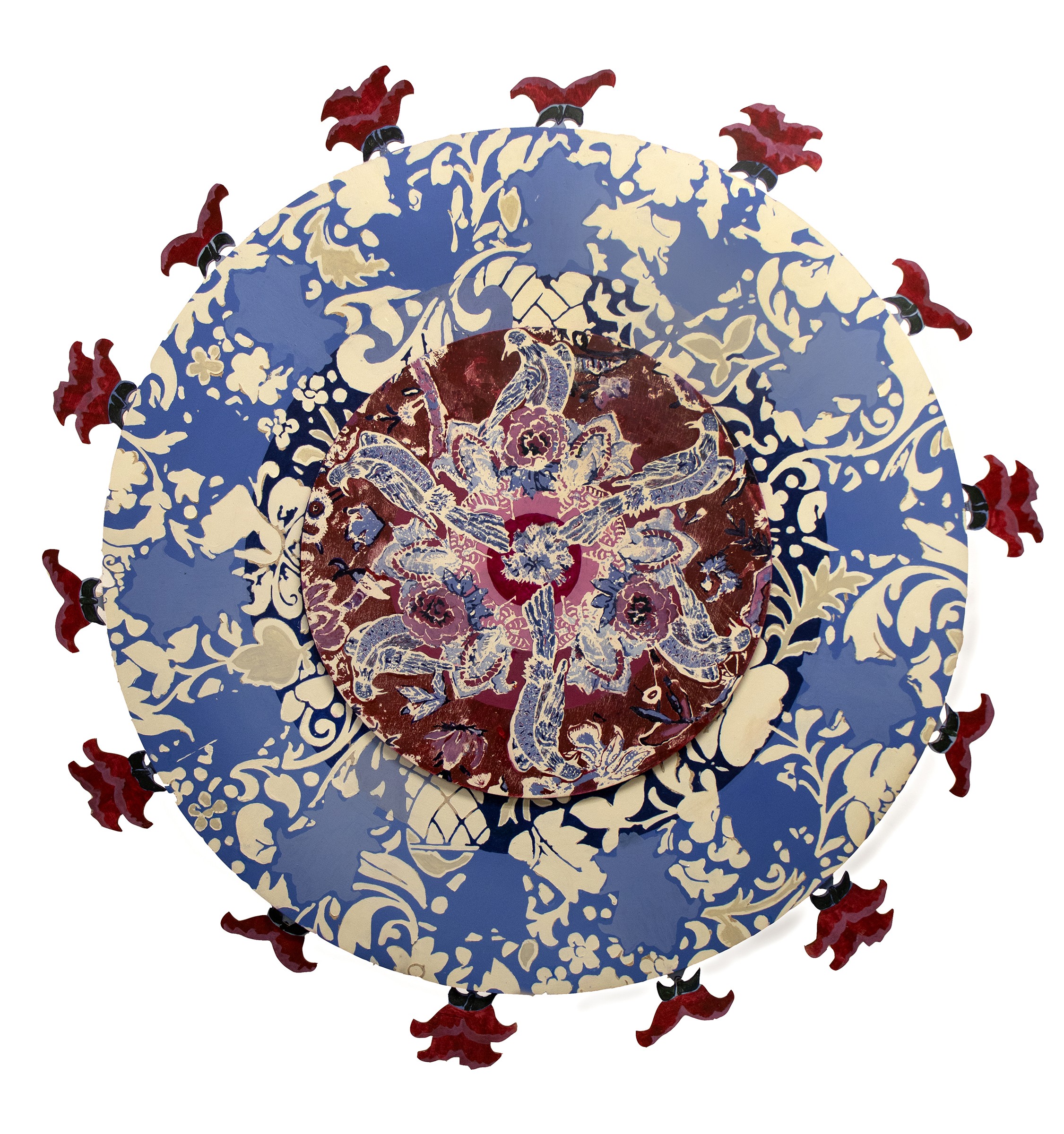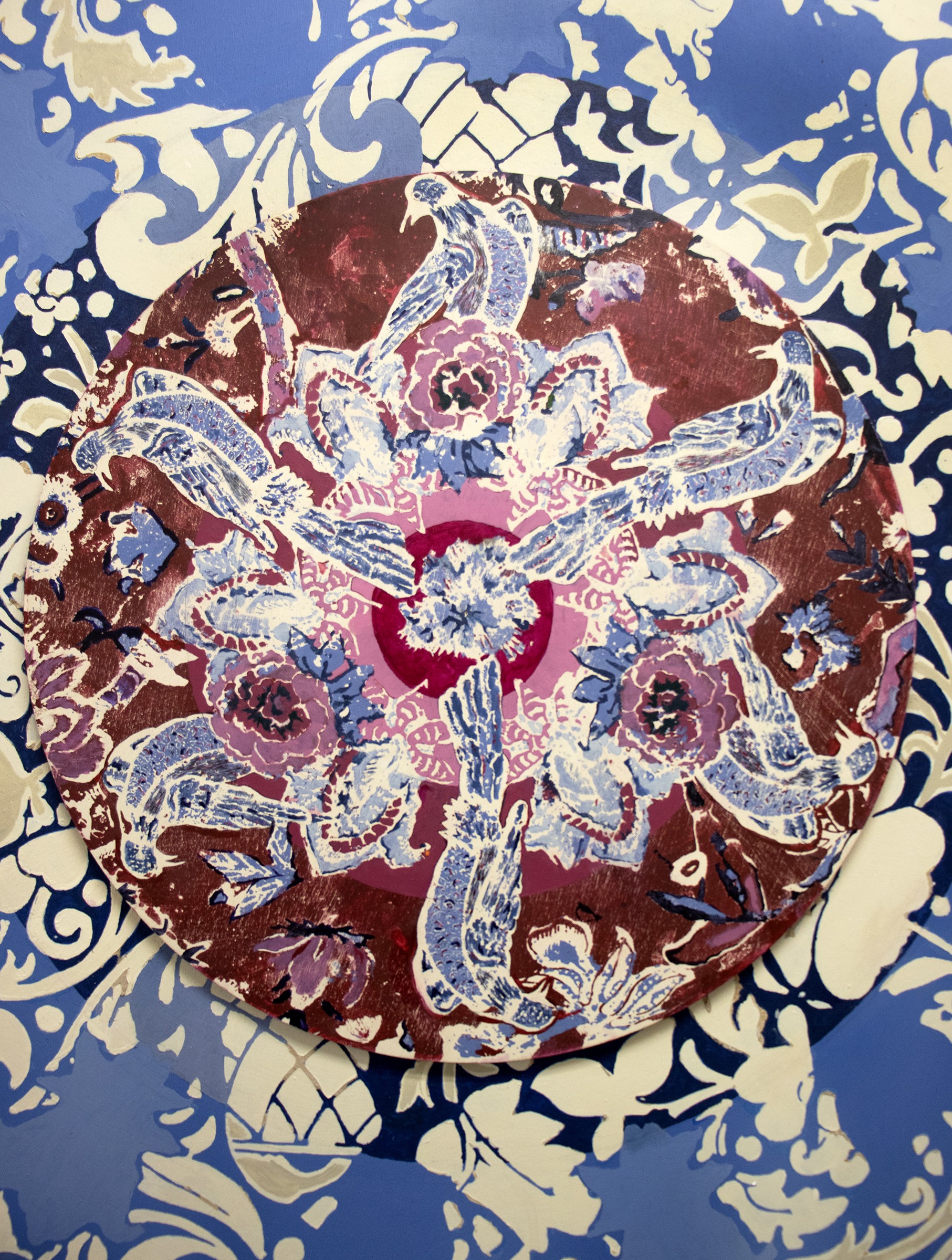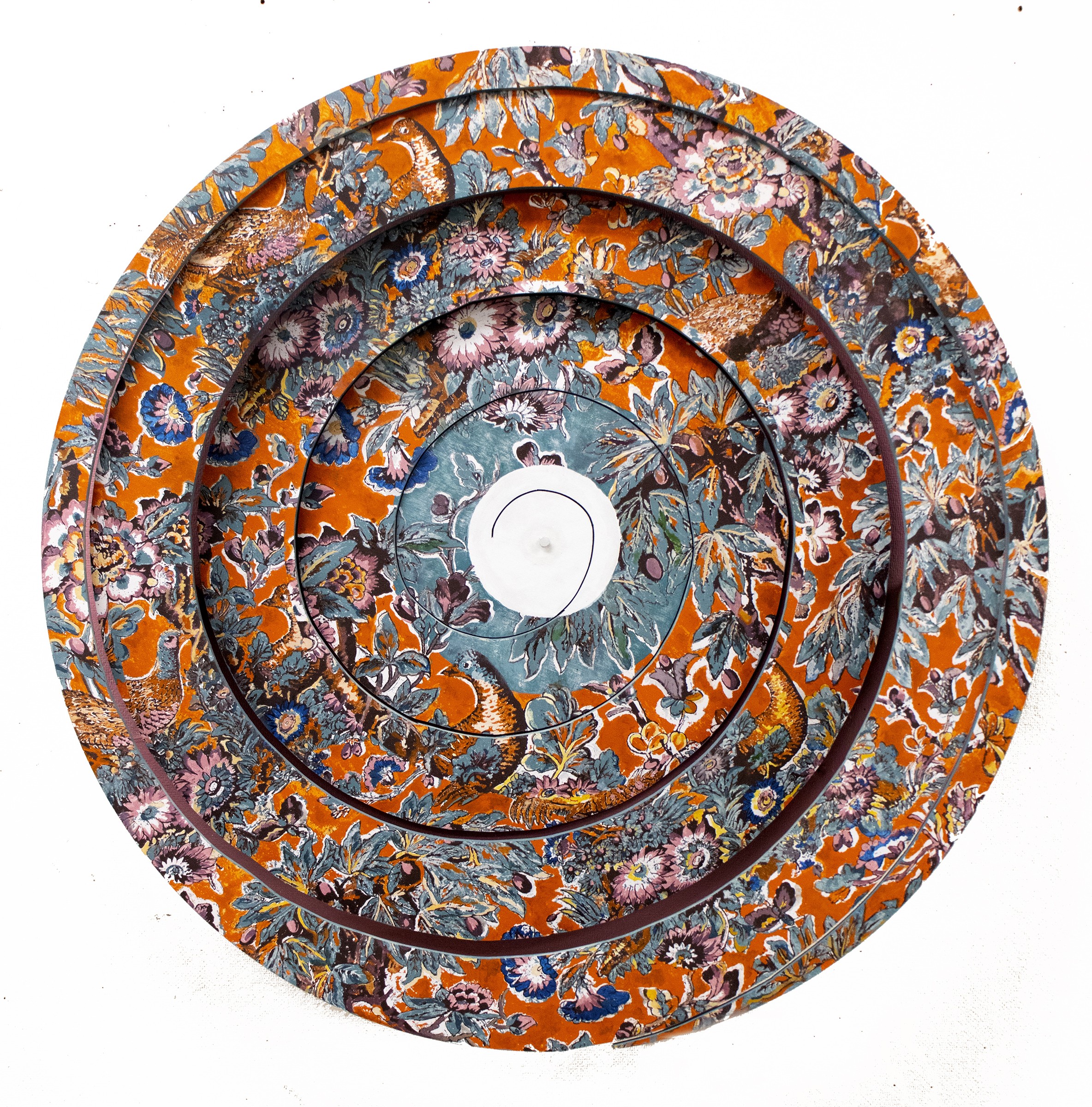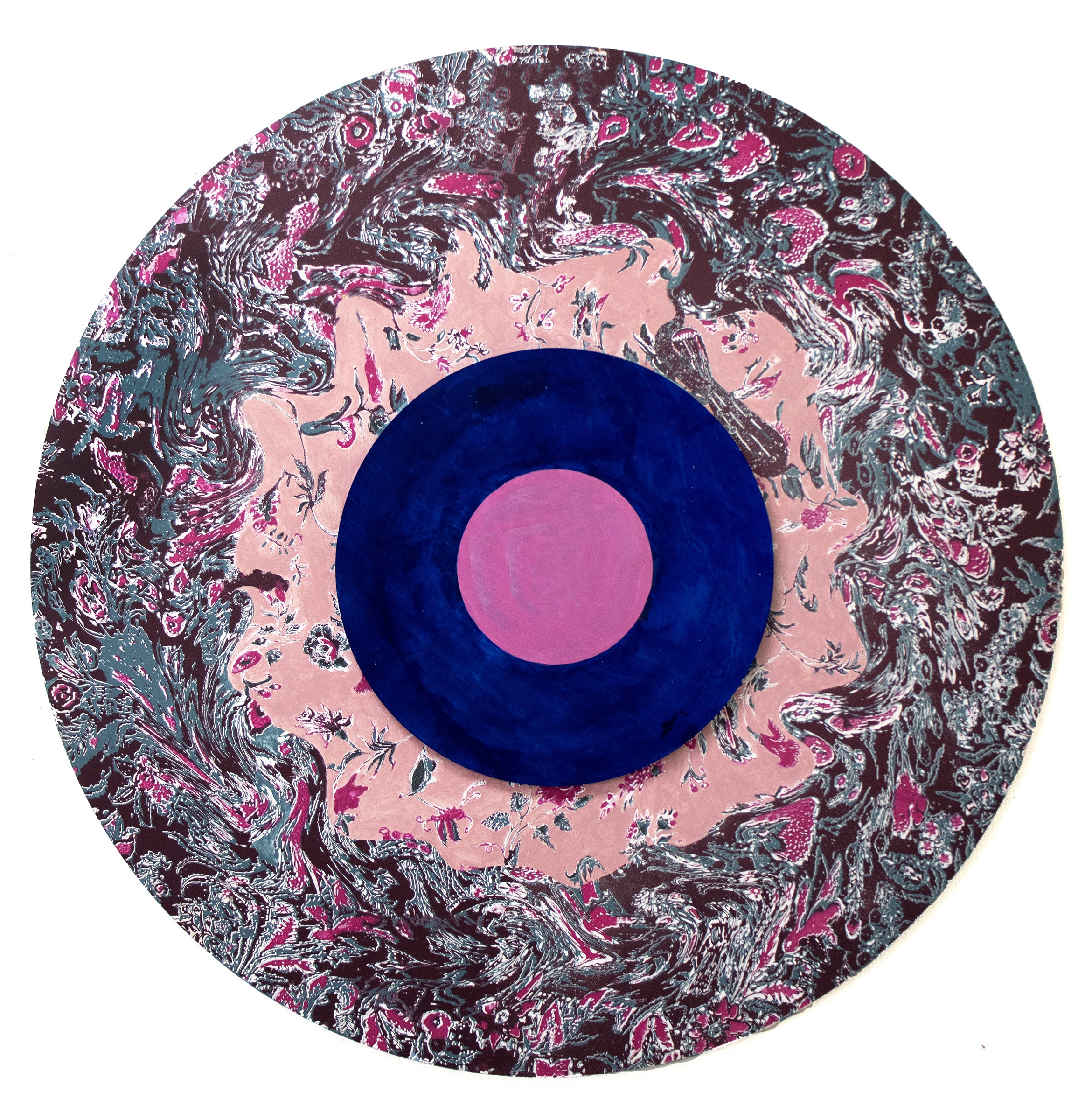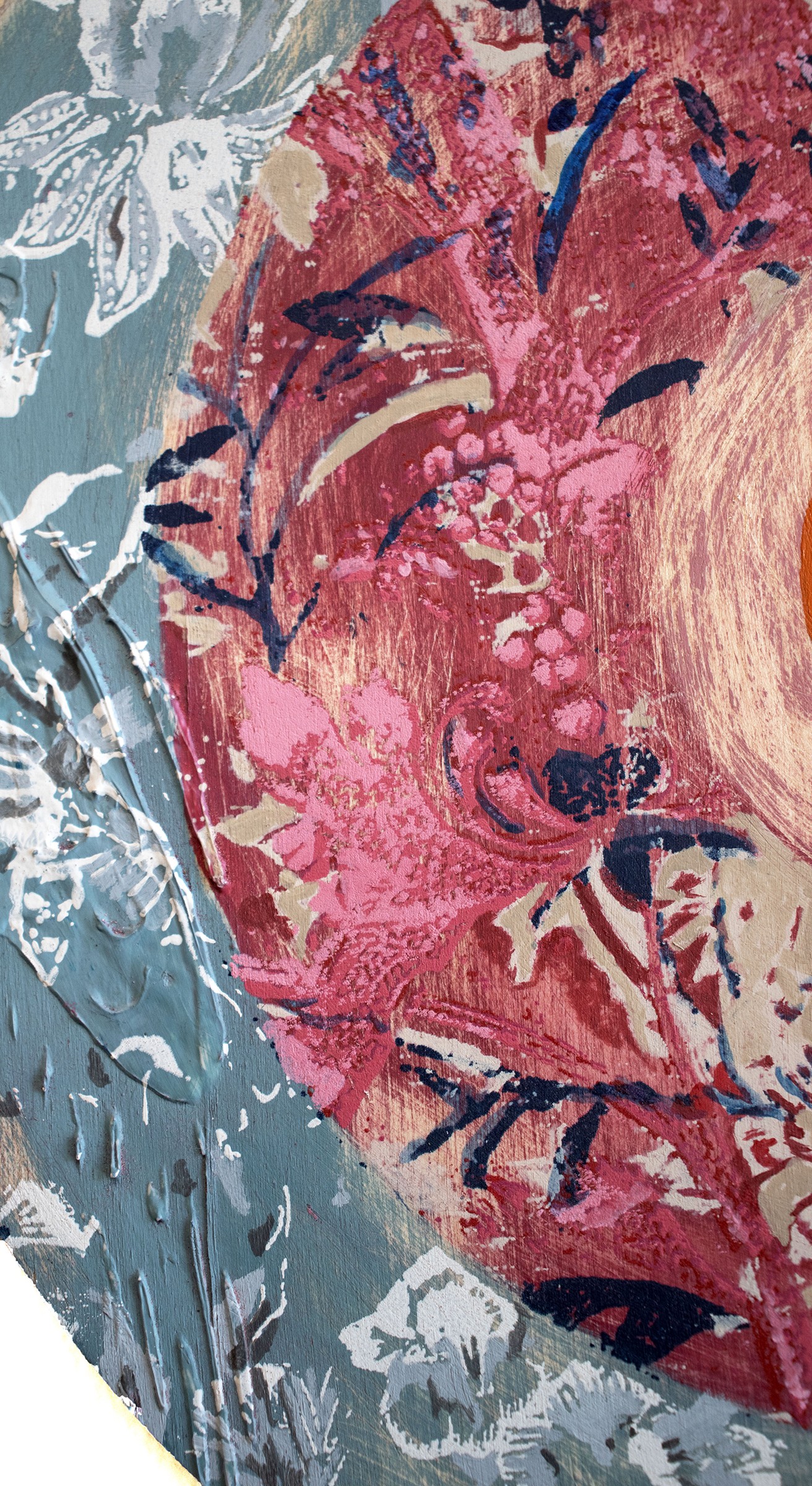Saloni Shah
Statement
* Saloni Shah is a General Fine Arts + Humanistic Studies Major.
The Fabric that was Banned
“A tale of armed trade, colonialism, slavery, and the dispossession of native peoples.”
- Dr. Sven Beckert
Chintz - the Indian fabric popularised for its vivid colors is tinted with a distressing history of transformation and disassociation which is largely neglected. The popular fabric was widely exported from India throughout Europe, however, with the fear of losing profits and protests from locals in their own country, the British Raj banned Chintz and went on to imitate the process. This fabric was stripped of its history and manipulated to be purposefully exotic, leaving behind a trail of suffering for the Indian craftsmen and economy. Nuanced iterations of the iconic motifs continue to emerge in mainstream Western media yet their origins are still extensively disregarded.
“The Fabric that was Banned” renders this transformation using the motif of a bird to narrate this story of entrapment. The work employs and builds on imagery of traditional Chintz contrasted with the English glazed replicas and modern iterations to showcase this timeline and the subsequent shift in power. Each piece focuses on a particular portion of the timeline, combining to form a continuous story unearthing this erasure.
